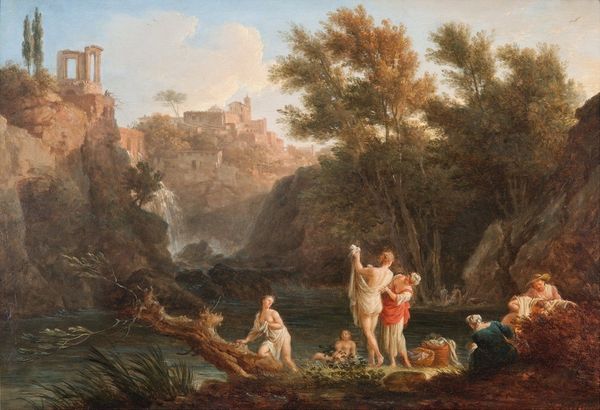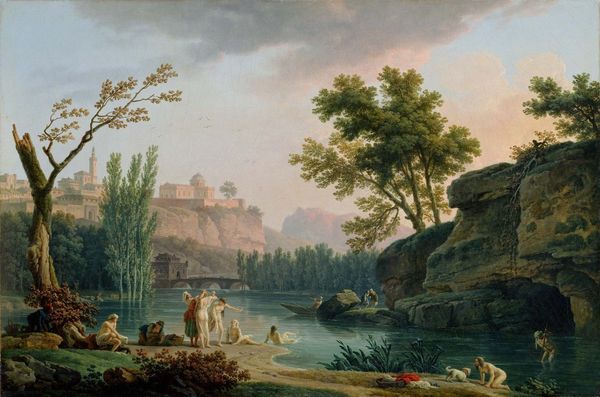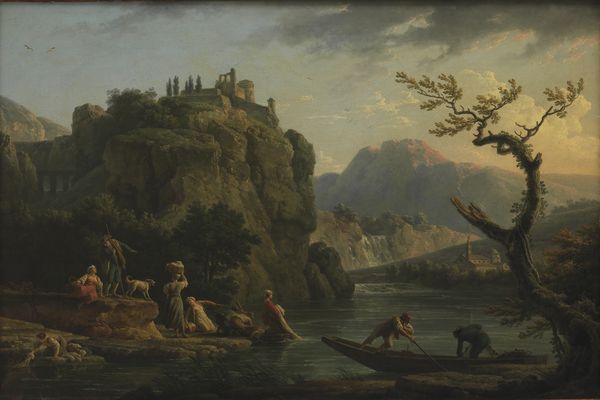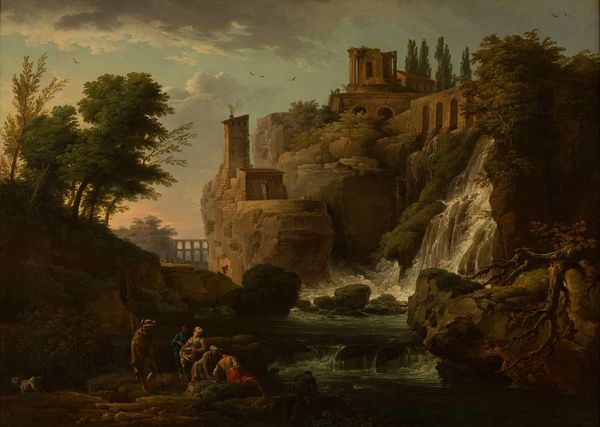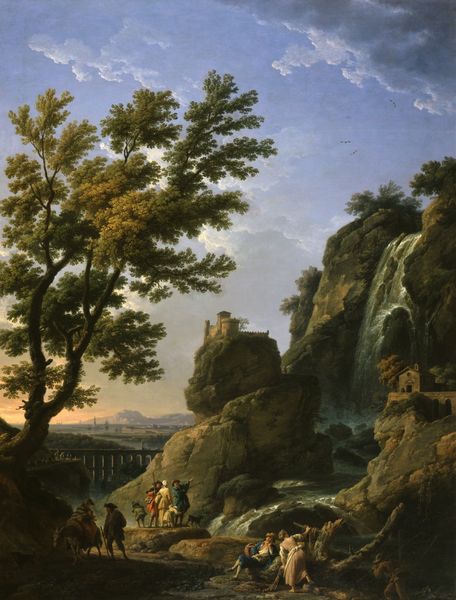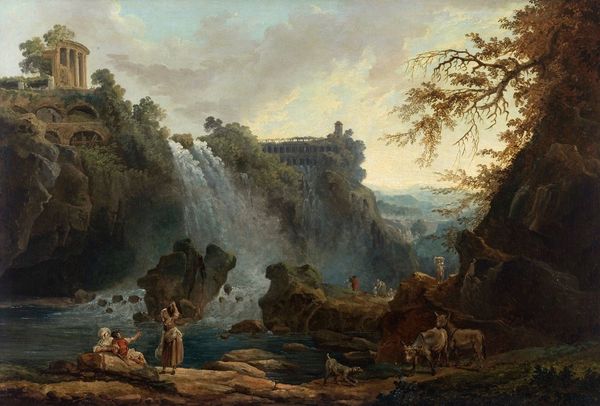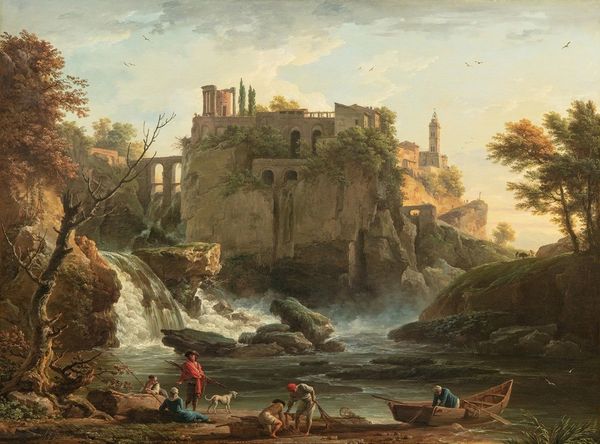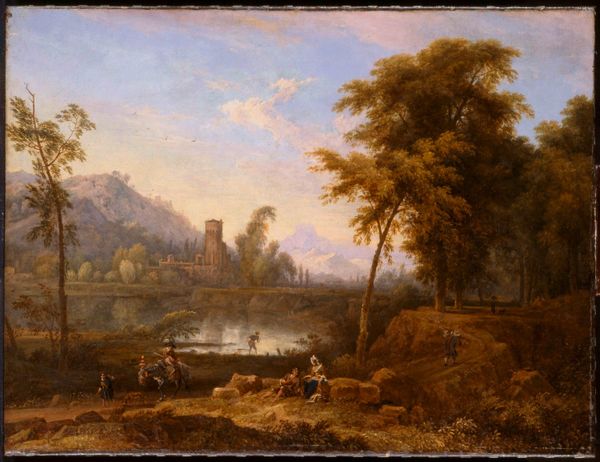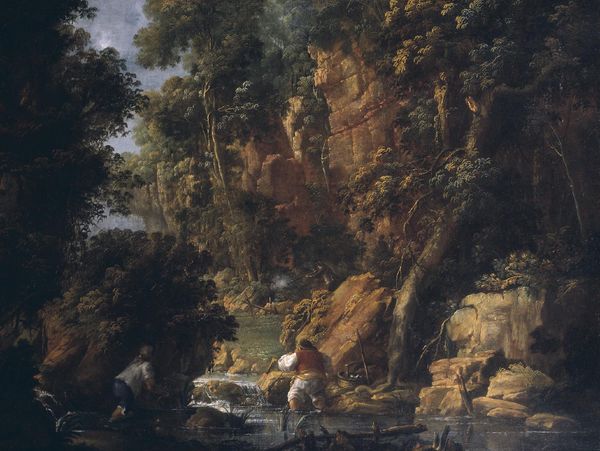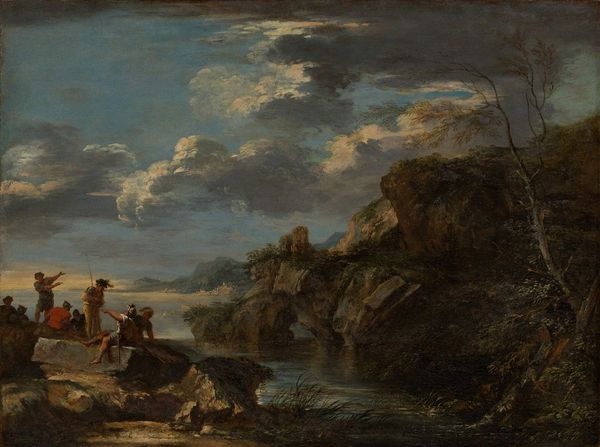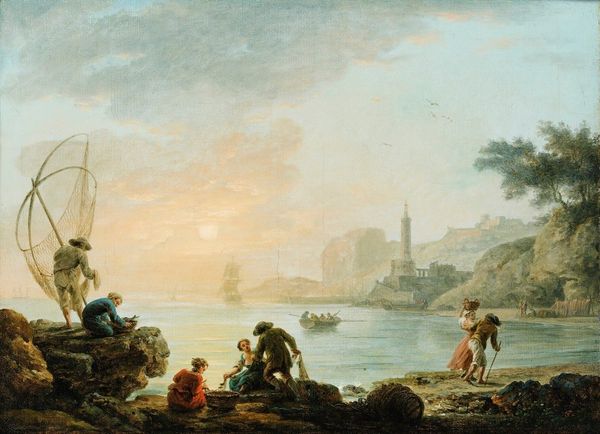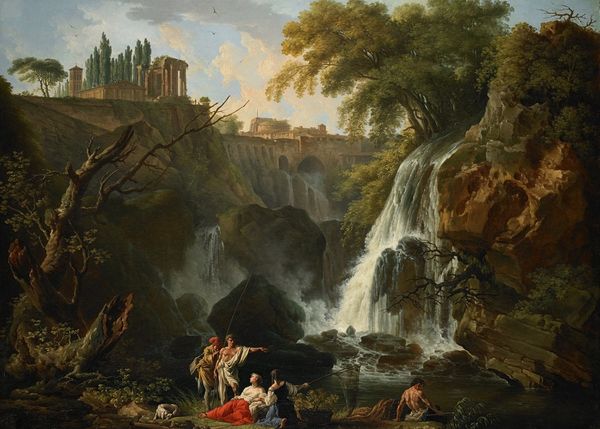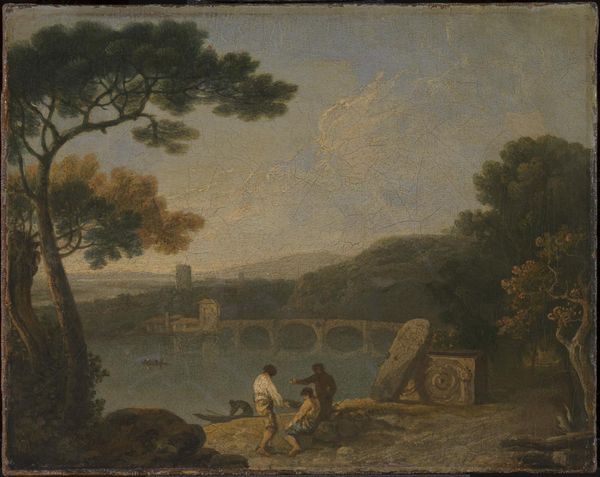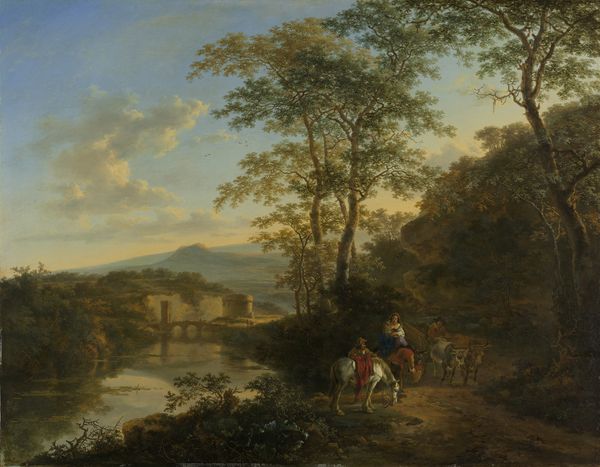
Copyright: Public Domain: Artvee
Claude-Joseph Vernet created this painting, *Paysage avec des lavandières*, with oil paint on canvas. Oil paint's capacity for blending and layering allowed Vernet to depict a highly picturesque scene. Look closely and you'll see how the artist captures the effects of light on the water, stone, and textiles. Notice the way he uses light and shadow to add depth and dimension to the composition. Vernet’s masterful use of this material is evident in the detailed rendering of the natural elements and the human figures that are depicted. But consider the subject of this painting. We see women doing laundry in the river, a representation of labor that was traditionally relegated to the lower classes. What is the relationship between the artist, the oil paint, and the figures who undertook this process? Vernet elevates a scene of everyday labor to the realm of high art. Understanding the materials and processes involved in the creation of a work, and how these are tied to wider social issues of labor, politics, and consumption, adds another layer of depth and meaning to our appreciation of art.
Comments
No comments
Be the first to comment and join the conversation on the ultimate creative platform.
